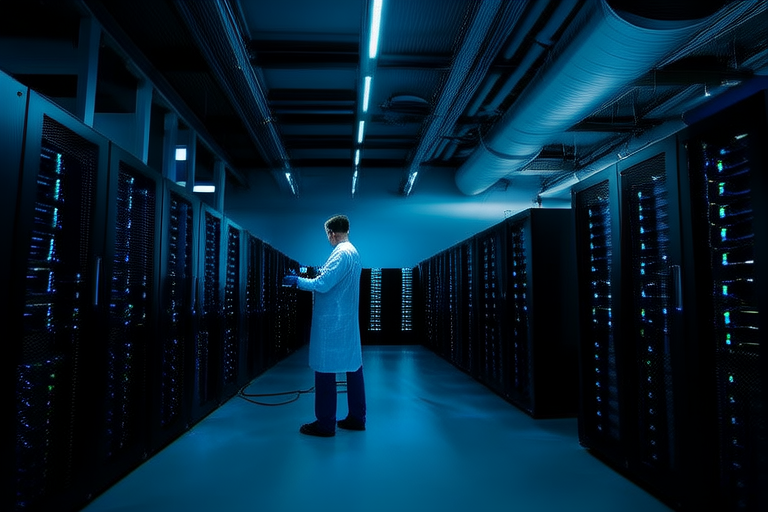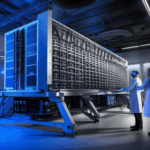“`html
Optimizing Performance with Cloud and Edge Computing: A Comprehensive Guide
Introduction
Cloud computing and edge computing are two pivotal technologies driving innovation and efficiency in modern businesses and industries. Cloud computing offers scalable, flexible, and cost-effective solutions, while edge computing processes data closer to where it is generated, reducing latency and improving bandwidth efficiency. Both technologies address critical challenges faced by organizations in optimizing performance, from enhancing data processing speed to ensuring data privacy.
This guide provides a comprehensive overview of how cloud and edge computing can be integrated to optimize performance, addressing key concepts, strategies, challenges, and future trends.
Understanding Cloud Computing
Definition and Components
Cloud computing refers to the delivery of computing services—such as servers, storage, databases, networking, software, and analytics—over the internet (“the cloud”). It allows organizations to access and manage resources remotely without maintaining physical hardware. Key components include Infrastructure as a Service (IaaS), Platform as a Service (PaaS), and Software as a Service (SaaS).
Benefits of Cloud Computing
The primary benefits of cloud computing include:
- Scalability: Easily scale up or down based on demand.
- Cost-effectiveness: Reduce capital expenditure on hardware and maintenance.
- Flexibility: Access resources from anywhere with an internet connection.
By providing robust infrastructure and services, cloud computing enhances performance and supports complex business operations.
Understanding Edge Computing
Definition and Role
Edge computing involves processing data at the edge of the network, closer to where it is generated. This approach reduces latency and improves bandwidth efficiency, making it ideal for applications requiring real-time processing, such as autonomous vehicles, smart cities, and industrial IoT.
Advantages of Edge Computing
The key advantages of edge computing include:
- Reduced Latency: Process data locally to minimize delays.
- Improved Bandwidth Efficiency: Reduce the amount of data sent to the cloud.
- Enhanced Privacy: Keep sensitive data on-site to comply with regulations.
Edge computing complements cloud computing by offloading tasks and reducing the load on central servers.
Key Differences Between Cloud and Edge Computing
Architecture and Data Processing
Cloud computing relies on centralized data centers, while edge computing processes data at the edge of the network. Cloud computing handles large-scale data processing, whereas edge computing focuses on local, real-time processing.
Deployment Scenarios
Cloud computing is ideal for applications requiring high availability and global reach, such as web hosting and data warehousing. Edge computing is better suited for time-sensitive applications, such as video surveillance and autonomous vehicles.
Real-world examples of combined cloud-edge architectures include:
- Smart factories using edge devices to monitor equipment and send alerts to cloud-based systems for predictive maintenance.
- Autonomous vehicles relying on edge computing for real-time decision-making and cloud computing for long-term data analysis.
Optimizing Performance with Cloud and Edge Computing
Integration Strategies
Integrating cloud and edge computing can lead to better performance through:
- Workload Distribution: Offload non-critical tasks to edge devices, freeing up cloud resources for critical operations.
- Data Management: Implement efficient data transfer protocols to ensure seamless communication between edge and cloud.
- Network Optimization: Use edge devices to preprocess data and reduce the volume of data sent over the network.
Best practices for deploying hybrid cloud-edge architectures include:
- Choosing the right mix of cloud and edge resources based on application requirements.
- Implementing robust security measures to protect data at all levels.
- Monitoring performance metrics to identify areas for improvement.
Challenges and Considerations
Common Challenges
Implementing cloud and edge computing solutions comes with several challenges:
- Security Concerns: Protecting data across distributed systems.
- Data Privacy Issues: Ensuring compliance with regulations like GDPR.
- Interoperability Challenges: Integrating different systems and platforms.
Recommendations
To overcome these challenges, organizations should:
- Invest in robust security measures, such as encryption and multi-factor authentication.
- Implement data governance policies to ensure compliance with regulations.
- Choose interoperable platforms and standards to facilitate integration.
Case Studies and Examples
Company XYZ
Company XYZ, a leading manufacturer, implemented a hybrid cloud-edge architecture to optimize performance. By deploying edge devices at manufacturing sites, they reduced latency and improved operational efficiency. The company also leveraged cloud computing for data analysis and predictive maintenance, resulting in significant cost savings and increased productivity.
Insights
What made this implementation successful was the careful selection of edge and cloud resources, coupled with robust data management and security measures. Company XYZ’s experience highlights the importance of a strategic approach to integrating cloud and edge computing.
Future Trends and Innovations
Emerging Trends
Emerging trends in cloud and edge computing include:
- 5G Integration: Leveraging 5G networks to support low-latency, high-bandwidth applications.
- IoT Advancements: Expanding the capabilities of IoT devices through edge computing.
- Artificial Intelligence: Using AI to enhance decision-making and automation in cloud-edge systems.
Potential Innovations
Future innovations may include:
- Advanced edge devices capable of handling complex computations.
- Seamless integration of cloud and edge computing through standardized APIs.
- Enhanced security features to protect data across distributed systems.
These trends and innovations will significantly impact industries and businesses, enabling greater efficiency and innovation.
Conclusion
In conclusion, cloud and edge computing offer powerful tools for optimizing performance in modern businesses and industries. By understanding the key concepts, strategies, and challenges associated with these technologies, organizations can effectively leverage them to drive innovation and efficiency.
We encourage readers to explore and implement cloud and edge computing in their own environments, ensuring they stay competitive in an increasingly digital world.
“`


